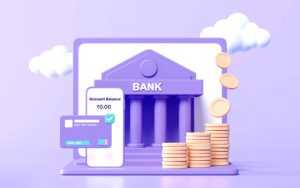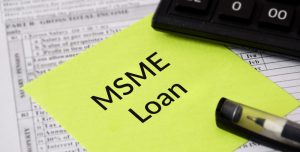Managing Your Money with Mint: A Beginner’s Guide

If you want to upgrade your financial goals this time of year and want to track your expenses, a free online budget tracking called Mint could surely help. Mint, a free online budget tracking, is a personal finance tool that allows you to review your working budget.
In today’s progressively online world, Mint budget tracking tool is, for the most part, commended for its informative yet straightforward and easy to use graphics and programs of person’s financial status. This financial management tool aid consumers in paying their bills, monitoring their credit scores, and saving big-ticket items. Not only that, Mint tracks oversee your investments and warn you on any dubious activity.
Mint financial tracking tool is easy to use and straightforward. Like any other programs and applications, you need to sign in and connect your accounts first. Syncing accounts such as bills, credit cards, and checking are essential as this is how this tool works, organizing your finances and giving you a more significant summary. If you want to know more about this fantastic tool, here’s an extensive guide for you.
What Precisely Is Mint?
Well, as we have mentioned above, Mint is a free budget or financial tracking online application. In essence, you inform this fantastic application how much cash you would want to spend on different purposes. And Mint will monitor or keep track of them.
However, first, you will need to lay out access to your loan accounts, investment, credit card, and bank. Then, Mint can synthesize or bring the data all together and present all your balances in one place, aiding you in monitoring and managing your money.
On the other hand, this online budget tracking tool can also aid you in setting your financial goals, get helpful tips on how to save more money, and get notifications when you are about to or have gone beyond any of your budgets. And the best thing about it is that you can access it directly from your mobile device. In a nutshell, Mint is an all-inclusive financial information chamber for all of your finances.
Plus, you do not have to worry about any app fees because Mint is absolutely free, without any charges. But it will offer suggestions every so often, and they are likely to recommend paid services that compensate them with referral fees. Thus, remember that these services will be good ones. However, make sure to do your research before getting one.
Find: 10 Best Personal Finance Apps
How Can You Start Using It?
Now that you have learned what this financial tracking tool can do for you, how do you get started with Mint? Well, the very first thing that you need to do is to set up a Mint account. Just go to their website and click the Sign-Up button.
Once you clicked on the Sign-Up button, you will have to enter your personal information such as email address and name. And then the account adding screen will pop up. From here, you need to provide all of your financial accounts. You can either leverage the search bar to explore your financial institution or hit one of the well-known options handed out by Mint.
When you’re done choosing your financial institution or other bank providers, this budget tracking tool will ask you to provide your online login profile. All you have to do is to enter your login information and repeat with all of the accounts that you own.
Once finished adding accounts, go to the Mint’s dashboard, and on the left side, you can view all of the accounts that you have registered. In the middle part, you can see a bunch of information such as budget progress, alerts, upcoming bolls, and advertisements.
Setting Budgets
Making and tracking budgets is one of the things that you can do with this financial tool. Since every transaction you create can be, more often than not, categorized, you can absolutely make category budgets. For instance, you could set $200 for clothing, $100 for gas, $400 for groceries, and $80 for coffee shops.
You can create many categories as you want and custom budgets as well. If you’re going to edit one of your category budgets, just position the cursor over that category, and you will see two arrows. Click these arrows to revise the budget.
If you want to make a new budget, click the Create Budget option. Type the category name and enter the amount that you want to set. Don’t forget to click Save. However, if you have already allocated your money, just provide the amounts into the app.
The Transaction Tab
If you want to see or review all of the pending or completed transactions in your accounts, just head to the Transaction tab. It presents all of your transactions in a chronological list. Also, you will notice that each activity have an associated category.
When you hit the category of an activity, you can select from a wide range of classifications to employ it. And this is how you can ensure that your financial calculations are correct and precise. You can either be as vague or as detailed as you would like to be with categories.
If you want to make your own custom category that you’d like to use for your budgets, click on Edit/Add in the dropdown menu. Also, you can include tags for each transaction, which you can use aside from the categories. Plus, each activity can have many tags. To view the available tags, click on a transaction and then click add, delete, or edit tags.
Furthermore, you also have the opportunity to include money transactions to the list by hitting the Add Transaction option. Add the amount, category, and payee. Decide whether you would like the money deducted from your most recent ATM withdrawal. Don’t forget to hit Save, and the cash transaction will be registered.
This option will be essential if you use cash more often because it could directly impact your budgets. There are two features of this budget tracking tool that are very helpful. The first feature is the Split option, which allows you to separate or split up one transaction into different independent transactions.
This could be very helpful if you make large purchases that contribute toward different categories, allowing you to have a more precise picture. The second feature is the Rules button. To open the editing console, click “Edit Details.
Afterward, once you make any changes to a particular transaction, you will be questioned if you would want to make that update to every transaction that has the same record. Say, for instance, if you’re going to change your Netflix charge from Movies category to Fun, then ensure that all possible costs from Netflix are, for the most part, classified as Fun.
Sure, this can be very confusing, but do not worry about this right now. You can opt with the basics, and everything will undoubtedly fall into their designated places.
Statistics
Mint can give you some excellent breakdowns, charts, and graphics of your budgets. These features are best when you already have your categorizations and budgets all managed. As such, if you go to the Trends and Statistics tabs, do not get surprised if you notice some weird results.
In the left part, you can check out all the categories of graphs, namely, Net Worth, Debts, Assets, Net Income, Income, and Spending. Also, there are plenty of sub-options. For instance, in the Spending category, the sub-options are By Tag, By Merchant, By Category, and Over Time
To find the most helpful graphs, just play around. See how your finances function by category over the past months and look at where you could have saved more cash. Or, see your net worth and consider how you can pay your debts or boost your assets.
Goals
In the Goals tab, you can set some budget goals for yourself. Although you have some financial goals, you can create them into this budget tracking tool so that it can track or monitor your progress.
You can include as many objectives as you want, and Mint will aid you in planning. Also, you can include custom goals if you would like to save up for something that is not part in the default list. Then, Mint will send you some reminders of how much money you should save up to achieve your goals.
Takeaway
Mint has undoubtedly lots of great things to offer that are indeed convenient. It offers fantastic features that aid you to control all of your finances. Whether you want to have a unified view of your accounts, oversee your financial goals, save more money, and view your cash flow, Miny can undoubtedly do it.
But, of course, this online financial tracking tools is not the final or definitive tool for all your finances. You will still need the drive to achieve all your goals, applications to aid you in monitoring your investments, and a good bank. However, Mint is an excellent place to begin, though.
Author Bio
Laurie Taylor is a writer and a blogger. She loves writing about mortgages because she believes that not everyone has the right knowledge about this topic. Laurie gets some insights from various mortgage companies such as Annapolis Mortgage Group. In her free time, she prefers to walk around the park with her two dogs.






